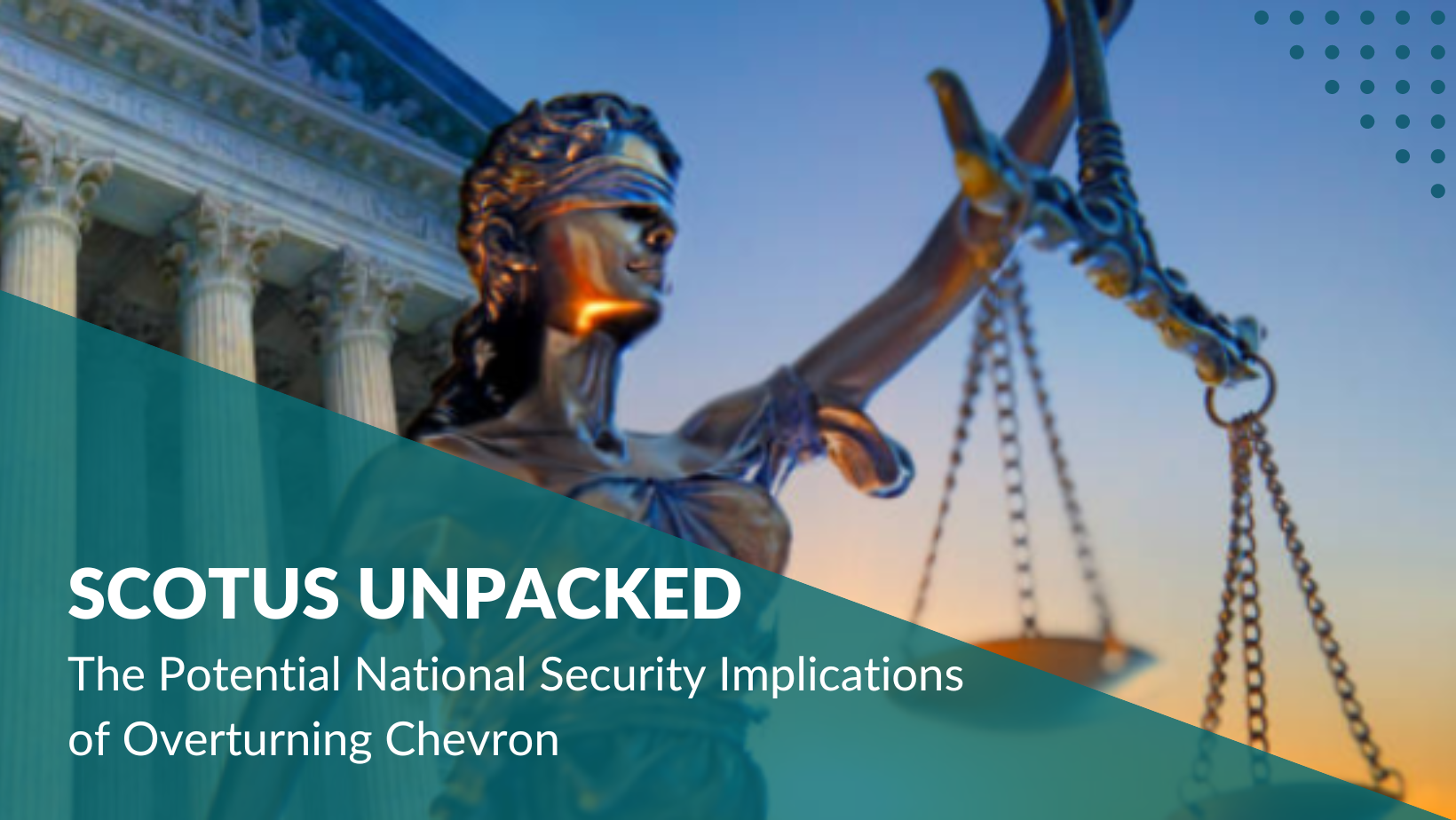Written by Alizay Azeem, MLFA Criminal Defense Paralegal
“Because I said so!” may sound childish—like something you may have said when you were younger, not taken seriously by the adults around you. But that is essentially the type of reasoning executive agencies often use in national security litigation—in cases that disproportionately affect Muslims. The success of this reasoning is a result of the Supreme Court case that established the Chevron deference doctrine and has blocked effective national security impact litigation. But that may change.
The Supreme Court recently heard oral arguments for two cases seeking to overturn the Chevron deference doctrine. Based on the questioning during the oral arguments, the majority of the Supreme Court seems to be in favor of overturning, or at least significantly narrowing, the Chevron deference doctrine. A decision by the Supreme Court is expected by June 2024.
What is the Chevron Deference Doctrine?
The Chevron deference doctrine holds that, if a law is unclear and an executive agency’s interpretation of that law is reasonable, judges should defer to the agency’s interpretation of the law. Judges first consider whether the statute is ambiguous; if it is ambiguous, they then evaluate if the agency’s interpretation of the statute is reasonable. If the interpretation passes this test, the court defers to the agency’s interpretation.
How is Chevron Applied?
In the United States, power is divided three ways: Congress creates the laws of the land, the Executive enforces these laws, and the Judiciary is responsible for interpreting and applying the law. In cases where Chevron is applied, an executive agency (like the Dept. of Justice (DOJ), Dept. Homeland Security (DHS), Environmental Protection Agency (EPA) etc.) steps into the Judiciary’s role of interpreting the law.
Some immigration cases, for example, are heard by an Immigration Judge (IJ) from the Department of Justice (an executive agency) rather than a judge from a federal court. If these immigration cases are later reviewed by a federal court, the federal courts often defer to the executive agency’s interpretation of the law, citing the Chevron deference doctrine.
For example, in Hernandez v. Sessions, Marleny Hernandez, originally from Colombia, appealed the Board of Immigration Appeals (BIA)’s decision affirming the Immigration Judge (IJ) in her case, who ruled that she was ineligible for asylum because she sent food packages to the Revolutionary Armed Forces of Colombia, a designated foreign terrorist organization (FTO). Hernandez argued that she provided this material support under duress, which she claimed is an implied exception to the statute prohibiting material support to an FTO. Under Chevron, the court gave deference to the Immigration Judge’s initial ruling (who is a part of the DOJ) and denied Hernandez’s petition for asylum.
Hernandez v. Sessions illustrates how Chevron works: an executive agency interpreted the law; a petitioner attempted to challenge the agency’s interpretation of the law; and a federal court gave the agency’s interpretation deference.
What are the Pros and Cons of Chevron?
Proponents of Chevron argue that the interpretive authority given to executive agencies is appropriate as it prevents judges from implementing their own policy agenda and promotes political accountability. During the oral arguments, Justice Elena Kagan offered artificial intelligence as an example of a policy area where well-versed agencies should be making decisions rather than courts. Various progressive groups have also discussed potential social policy costs of abandoning Chevron (e.g., it would undermine federal health agencies and disrupt public health programs across the country).
Opponents of Chevron emphasize that it enables executive overreach, making it difficult to challenge executive agency decisions. During oral arguments, Justice Brett Kavanaugh also complained that agency policies fluctuate too often under Chevron. Under a progressive administration, agencies may adopt progressive policies and interpretations for that period; however, a new administration may change them, creating inconsistency.
Missing from public discourse is how Chevron impacts national security litigation. National security agencies such as the DHS and DOJ do not possess specialized scientific and technical knowledge in the way that other executive agencies, such as the EPA, might. While these agencies may attempt to portray themselves as experts of national security by classifying information, they do not rely on specialized scientific or technical knowledge beyond the comprehension of the courts. Decisions related to national security can and should be checked by the Judiciary (e.g., Hamdan v. Rumsfeld where Chevron deference didn’t apply). Chevron’s broad deference to executive agencies like the DOJ severely limits the potential of impactful national security litigation.
What Legal Potential Exists for MLFA if Chevron is Overturned?
Given the application of Chevron to primarily administrative law challenges, it is unlikely that overturning it would have any significant impact to pre-conviction criminal defense national security litigation. However, chipping away at the power granted to national security executive agencies, including the DOJ’s Bureau of Prisons (BOP), could help post-conviction litigation, such as those involving sentencing calculations.
Further evaluation of national security-related cases where Chevron was cited suggests that immigration-related challenges, such as challenging the designation of Tier III foreign terrorist organizations, may be the area of most significant impact.
The Patriot Act authorized the Secretary of State to determine which foreign organizations should be considered foreign terrorist organizations (FTOs). While Tier I and Tier II organizations undergo a formal designation process by the Secretary of State, Tier III organizations do not. Their designation is decided on a case-by-case basis by an Immigration Judge.
In Mirza v. Garland, Mirza, a member of the Muhajir/Muttahida Qaumi Movement (MQM) party in Pakistan, was initially granted asylum in the U.S. due to his associations with MQM. When the government later sought to deport him, they used this association against Mirza. The Fifth Circuit cited that an asylum seeker who is a member of a Tier III terrorist organization is ineligible for asylum. There is no official list of Tier III FTOs, and the MQM is not designated as a foreign terrorist organization by the Secretary of State. Yet, the Immigration Judge in Mirza’s case deemed the MQM as an FTO, revoking Mirza’s asylum.
In theory, overturning the Chevron deference doctrine would allow MLFA to challenge federal agencies in cases like Mirza’s. The door to impactful national security litigation has remained closed due to executive agencies’ ‘black box’ policymaking. But overturning Chevron may creak that door open.
Alizay Azeem is MLFA’s Criminal Defense Paralegal. A Rice University graduate, Alizay has worked for MLFA since July 2023 assisting with case management and legal research for federal national security criminal defense cases. She is a part of MLFA’s Paralegal-to-Law School Program and aims to attend law school in Fall 2025.


